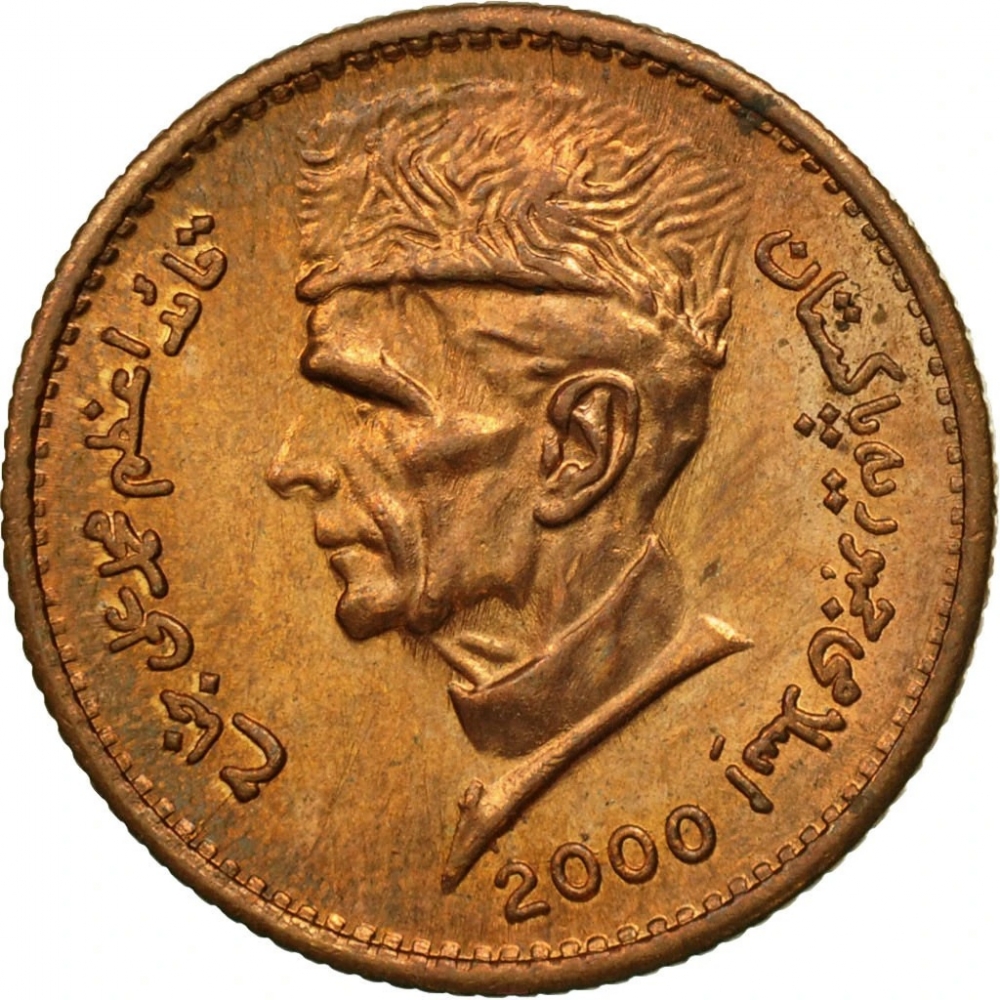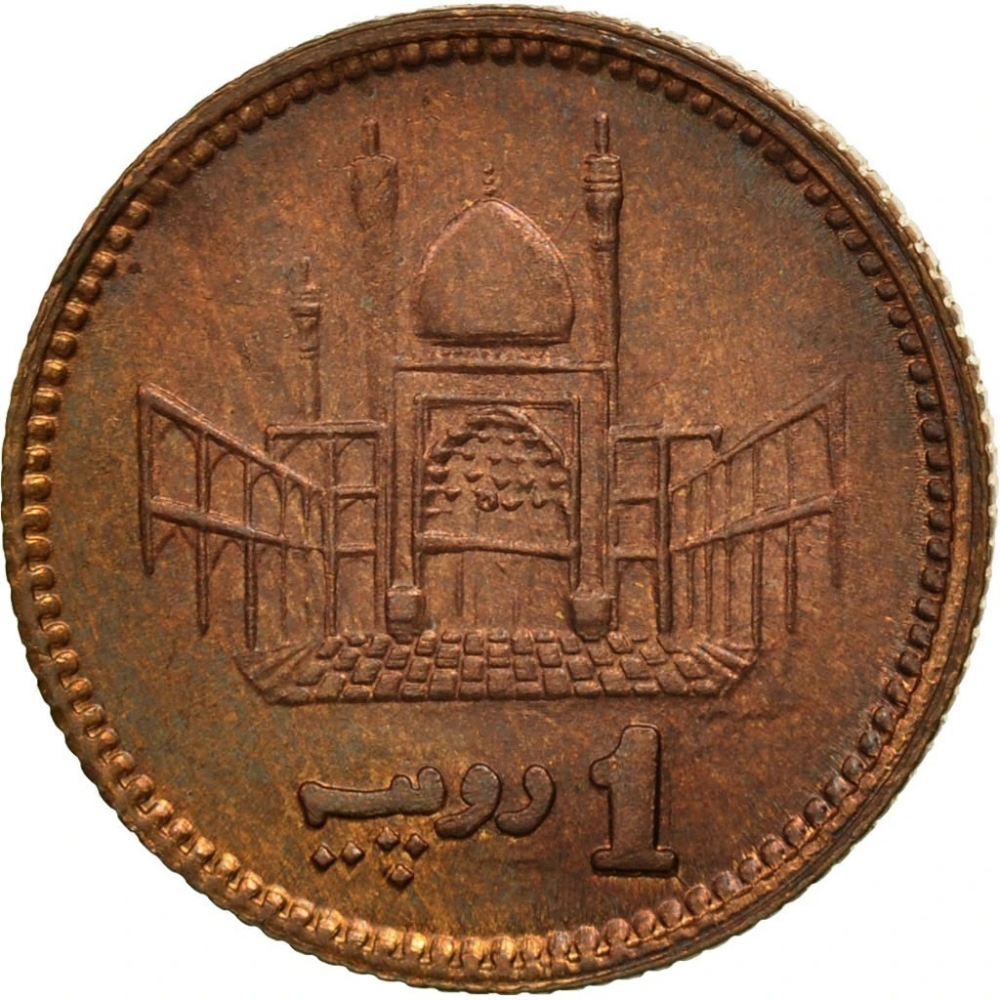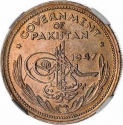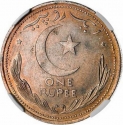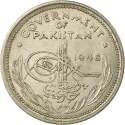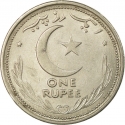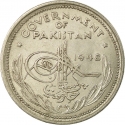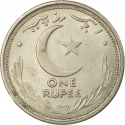Description
There was a variety in 2005: wide & large date, small portrait, extended border on the obverse.
Obverse

|
Depicts a portrait of Muhammad Ali Jinnah, facing left, wearing a Karakul hat which subsequently came to be known as the "Jinnah cap", surrounded by the inscription "Quaid-i-Azam (Great Leader) Muhammad Ali Jinnah" and the country name "Islamic Republic of Pakistan". Date below.
Muhammad Ali Jinnah (born Mahomedali Jinnahbhai; 1876–1948) was a barrister, politician and the founder of Pakistan. Jinnah served as the leader of the All-India Muslim League from 1913 until Pakistan's independence on 14 August 1947, and then as Pakistan's first Governor-General until his death. He is revered in Pakistan as Quaid-i-Azam ("Great Leader") and Baba-i-Qaum, ("Father of the Nation"). His birthday is a national holiday in Pakistan.
He left a deep and respected legacy in Pakistan. Innumerable streets, roads and localities in the world are named after Jinnah. Several universities and public buildings in Pakistan bear Jinnah's name.
قائد اعظم محمد علی جناح
اسلامی جمہوریۂ پاکِستان
1998
|
Reverse

|
Depicts Shrine of Lal Shahbaz Qalandar, value below.
The Shrine of Lal Shabaz Qalandar is a Sufi shrine dedicated to the 13th-century Islamic mystic, Lal Shahbaz Qalandar. The shrine is located in Sehwan Sharif, in the Pakistani province of Sindh. The original shrine was built in 1356, but was subsequently upgraded. The completed portions are now extensively covered in white marble, glazed tiles, and mirror work. The shrine's gold-plated main door was donated by the last Shah of Iran, Mohammad Reza Pahlavi, in the 1970s. The saint's tomb is located under the shrine's central dome, with some illumination provided by small earthen oil lamps similar to those used in Hindu ceremonies.
Syed Usman Marwandi (1177 – 1274), popularly known as Lal Shahbaz Qalandar, was a Sufi saint and religious-poet of present-day Pakistan and Afghanistan. He is highly regarded and respected by people of all religions because he preached religious tolerance among Muslims and Hindus. He was called Lal ("ruby-colored") after his usual red attire and "Shahbaz" to denote a noble and divine spirit and "Qalandar" as he was a wandering holy man. The spiritual song "Dama Dam Mast Qalandar" glorifies Lal Shahbaz Qalandar's teachings, and the song is widely used in Pakistan, India, Afghanistan and Bangladesh. Originally written in the 13th century, the song has been sung by various singers since then, and is widely popular in the sub-continent.
|
| Edge |
|
Characteristics
| Material |
Bronze |
| Weight |
4 g |
| Diameter |
20 mm |
| Thickness |
1.75 mm |
| Shape |
 round
round
|
| Alignment |
Medal
|
| Mint |
Pakistan Mint
|
Related coins
Pattern, Type 3
Cupronickel, 11.5 g, ⌀ 28 mm
My Collection
My Exchange
Dominion, star right of crescent
Nickel, 11.5 g, ⌀ 28 mm
My Collection
My Exchange
Dominion, star right of crescent
Nickel, 11.5 g, ⌀ 28 mm
My Collection
My Exchange
|


